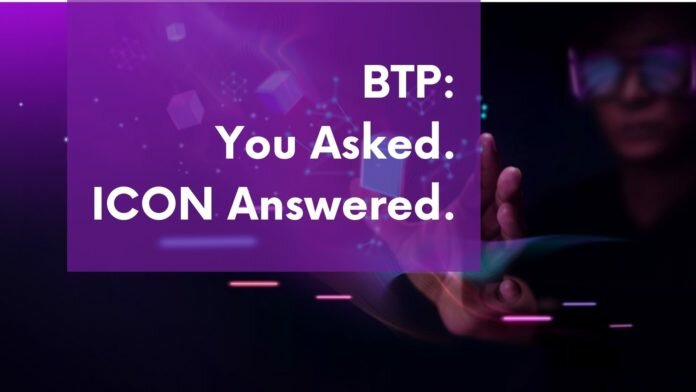ICON recently hosted an AMA with Cyrus, ICON’s technical lead for BTP integration.
During the AMA, Cyrus answered a number of questions related to BTP, ICON’s upcoming interoperability solution.
You can watch the video on your own — you’re strongly encouraged to, in fact. But for the convenience of readers, we’ll summarize some of the salient points below.
- Cyrus has great hair. Not really relevant to BTP, per se. But nevertheless true.
- Next integration after BSC and Harmony is Ethereum.
- BTP 2.0’s purpose is to solve the high gas fees. “We can think of BTP 2.0 as the full version of BTP that will be launched once it is ready,” says Cyrus.
- As for the actual solution to the gas fees dilemma, Cyrus explains, “What we’re doing is creating virtual blockchains that only contain BTP messages. So the gas costs scales at a constant rate with the number of BTP transactions.” Not really sure what that means, but all that’s important is that it works.
- ICON Bridge is an interim solution. It’s centralized, so gas fees aren’t an issue (but readers already know that). Also, the person executing the transaction on ICON Bridge is paying for the transaction.
- While gas fees for ICON are specific, gas fees for every other blockchain is the same. This is because ICON has more freedom with the ICON blockchain than with others. Cyrus explains, “We will be able to put out a network proposal with the hope that network validators will agree to reduce the cost of smart contracts that are verifying the state of other blockchains on ICON. Something like that we don’t really expect to be possible with external blockchains.”
- Why ICE? Well, it’s useful for Solidity development and EVM compatibility, and it’s a gateway to the Polkadot ecosystem. “We can more granularly control fees associated with these sorts of transactions on ICE than we can on other EVM compatible chains,” says Cyrus. “So it’s much more developer-friendly to do it on ICE.”
- ICON Bridge is integrating Harmony and BSC first, and Ethereum shortly after as these are all EVM-compatible chains.
- While BTP has been in development for a few years, things are really focused on BTP now, largely thanks to the completion of ICON 2.0. For example, ICONLOOP’s public platform team is now completely on BTP because ICON 2.0 is essentially in maintenance mode.
- Cyrus says, “Development on ICON has been growing and is the biggest it has ever been since I’ve been here.”
- ICON has no plans for BTP to connect to Bitchoin. “Because Bitcoin doesn’t have smart contracts, it would be a very bespoke architecture just for Bitcoin,” says Cyrus. After BTP 2.0, however, they’ll revisit whether to connect to Bitcoin.









